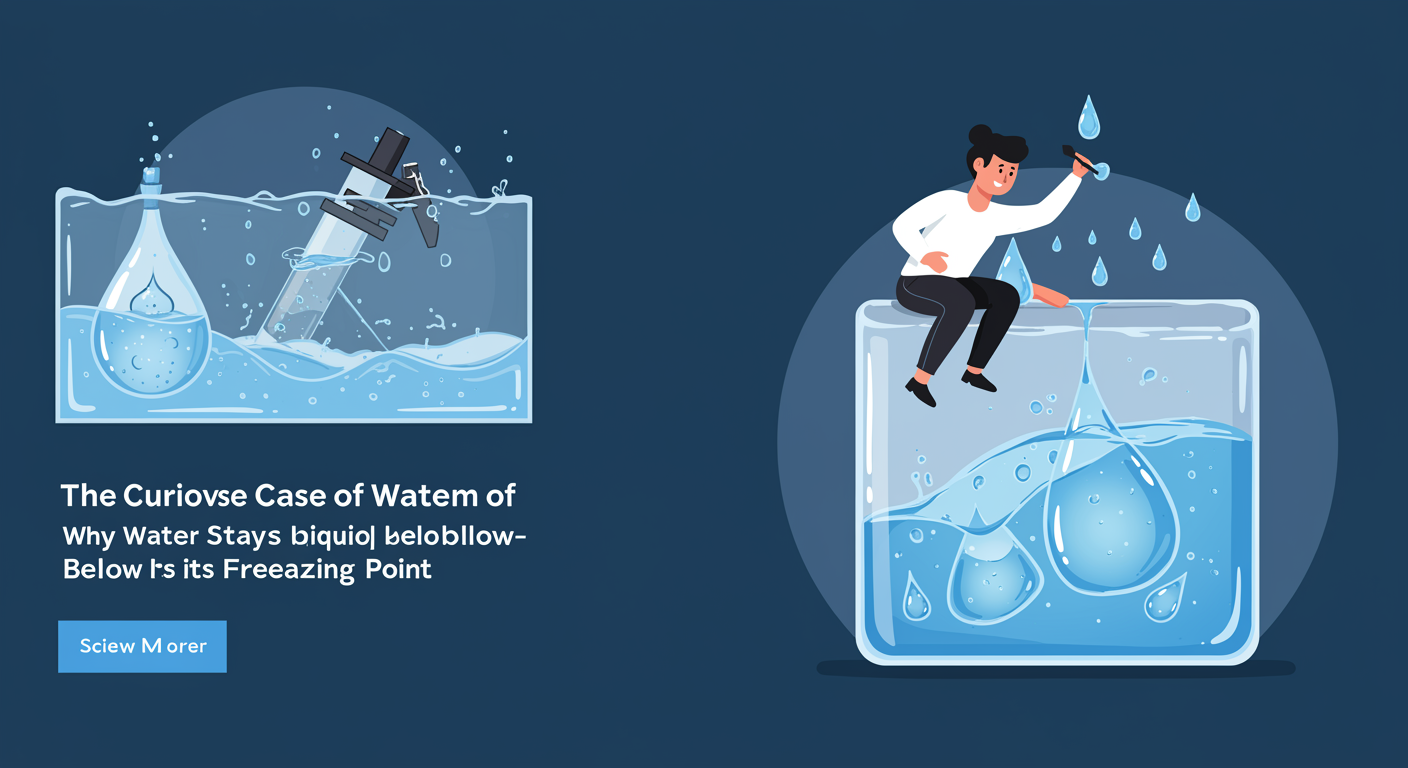
You know the drill: water freezes at 0 degrees Celsius, or 32 degrees Fahrenheit. It’s one of those fundamental facts we learn early in life, as reliable as the sun rising. But what if I told you that this widely accepted truth isn’t always, strictly speaking, true? Sometimes, under just the right conditions, water can shrug off its frozen destiny and remain stubbornly liquid well below its supposed freezing point. This isn’t a magic trick; it’s a fascinating phenomenon that reveals a deeper layer to the science of how matter behaves, a delicate dance of molecules that offers valuable insights into everything from atmospheric conditions to biological processes.
This curious state is known as supercooling. Imagine a glass of water, perfectly clear, sitting at -5°C (23°F) or even colder, yet still flowing like it just came from the tap. It looks like water, feels like water, but its temperature says it should be ice. For supercooled water, the conventional rulebook for freezing seems to have been temporarily misplaced. This isn’t about adding anti-freeze; it’s about the very mechanics of how a liquid transitions into a solid, a process that requires more than just dropping the temperature.
So, why does this happen? The answer lies in something called nucleation. Think of building a house. You don’t just dump all the bricks on the ground and expect a structure to magically appear. You need a starting point, a foundation, a blueprint to guide the arrangement of those bricks. Similarly, for water molecules to transition from a chaotic liquid state to the orderly, crystalline structure of ice, they need a nucleation site. These sites are tiny imperfections or foreign particles — dust, microscopic air bubbles, even scratches on the container’s surface. Without these initial anchors, the water molecules struggle to organize themselves into an ice crystal lattice, even when the temperature is below zero. It’s like having all the building blocks for a structure but no one to lay the first stone.
Scientists conducting research on supercooling often go to great lengths to create the necessary conditions. They use highly purified water, often distilled and filtered multiple times to remove any potential nucleation sites. The containers are typically very smooth, reducing surface imperfections. Furthermore, the water must be cooled gently, without agitation. Even a slight bump, a sudden vibration, or the introduction of a tiny dust particle can provide that crucial nucleation site, triggering an instantaneous crystallization. You might have seen videos of supercooled water turning to ice the moment a pebble is dropped in, or when it’s poured over an ice cube. This dramatic, rapid freezing is direct evidence of its unstable, supercooled state.
This distinction between needing an ‘outside’ helper versus spontaneous formation highlights two types of nucleation. What we typically observe in everyday freezing, relying on impurities or container surfaces, is called heterogeneous nucleation. It’s the path of least resistance for ice formation. If water is incredibly pure and perfectly still, it can theoretically reach much lower temperatures before freezing – sometimes even down to -40°C (-40°F) for minute droplets. At this point, the random jostling of water molecules is so slow and their alignment so perfect that they can spontaneously form an ice embryo without any external help. This rarer phenomenon is known as homogeneous nucleation, and it requires truly extreme conditions, showcasing the resilience of the liquid state.
The phenomenon of supercooling isn’t just a laboratory curiosity; it has significant real-world implications, impacting everything from weather patterns to the survival of living organisms. Consider freezing rain: it starts as supercooled water droplets in the atmosphere that freeze on contact with surfaces below zero, coating roads and trees in a treacherous layer of ice. In the realm of biology, many insects, amphibians, and plants have evolved strategies to either avoid freezing or even utilize supercooling to survive harsh winters. Some produce natural ‘antifreeze’ proteins that bind to tiny ice crystals, preventing them from growing, effectively suppressing nucleation. Others purge their bodies of ice-nucleating agents, allowing their internal fluids to supercool, a remarkable discovery in cryobiology that helps us understand life in extreme environments. This ongoing experiment of nature provides a rich field for further scientific inquiry.
What appears to be a simple violation of a basic physical rule actually reveals the intricate molecular forces at play. Water, that most common and vital substance, continues to surprise us with its complex behaviors. The ability of water to supercool underscores that phase transitions aren’t solely dictated by temperature, but by the kinetic and thermodynamic requirements for crystal formation. It’s a testament to how much there is still to learn about the fundamental properties of matter, reminding us that even the most familiar substances hold profound secrets waiting for further research and understanding. The next time you see ice forming, consider the invisible dance that had to occur for those first crystals to take shape, and the conditions under which that process can be remarkably postponed.